 I definitely picked a good day to stay home- approximately 10-inches of snow dumped on Gig Harbor last night! It would be a great day to be on the water chasing winter steel, but it is a better day to stay off the roads and daydream about the warmth summer instead. Better check the summer fly boxes and see what needs to be replenished...
I definitely picked a good day to stay home- approximately 10-inches of snow dumped on Gig Harbor last night! It would be a great day to be on the water chasing winter steel, but it is a better day to stay off the roads and daydream about the warmth summer instead. Better check the summer fly boxes and see what needs to be replenished...The Street Walker is a simple, unassuming pattern from Gordon Nash that continually accounts for many steelhead each year. Nash devised this pattern for Oregon's Deschutes River where it remains a staple.
The original Street Walker was tied on a nickle plated hook (Eagle Claw 1197N). Nash felt the nickle plating coupled with the Flashabou wing made the pattern a better "attactor." Although strongly considered a summer pattern, don't underestimate the fly's effectiveness in the cold and clear water of winter where a slow presentation is required.
I wouldn't want to be on the Kalama River without a few Street Walker's in my box. Purple seems to be a summer prerequisite on this beautiful river.
Materials
Hook: Choice (Nickle plated Alec Jackson #5 pictured)
Thread: 6/0 red, wine, black, or purple. (6/0 purple is pictured)
Tail: Purple silk floss (Originally purple hackle fibers)
Ribbing: Medium oval silver Lagartun
Body: Purple dubbing (Originally purple chenille) (Pictured is a custom mixture of 60-percent purple arctic fox under fur, 20-percent chopped purple Antron, and 20-percent chopped red Antron.
Hackle: Purple hackle fibers (I used chinese rooster) (Purple rabbit can be substuted)
Wing: Mirage Flashabou
Step 1:
Start thread just behind the eye. Tie in floss and wrap/secure thread down the hook shank. Stopping point is equal vertically to the hook point. Cut tail slightly longer than normal.
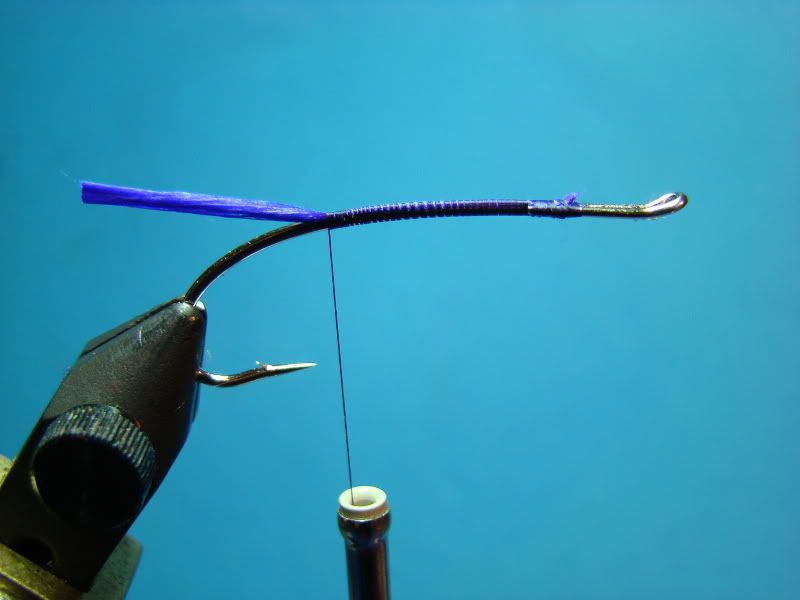
Step 2:
Tie in tinsel and secure with firm thread wraps.
Step 3:
Dub body using standard dubbing technique.
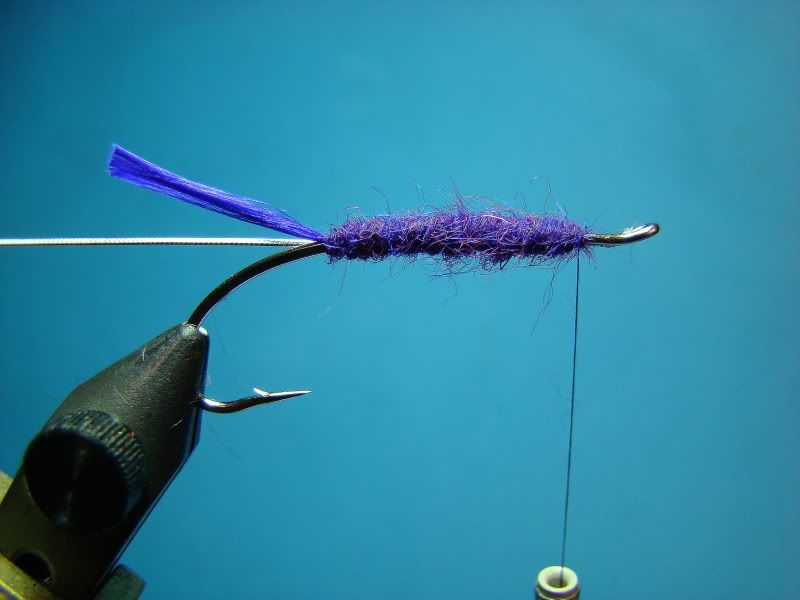
Pick out dubbing for a "buggy" appearance. I use velcro on a popsicle stick to roughen up the dubbing.
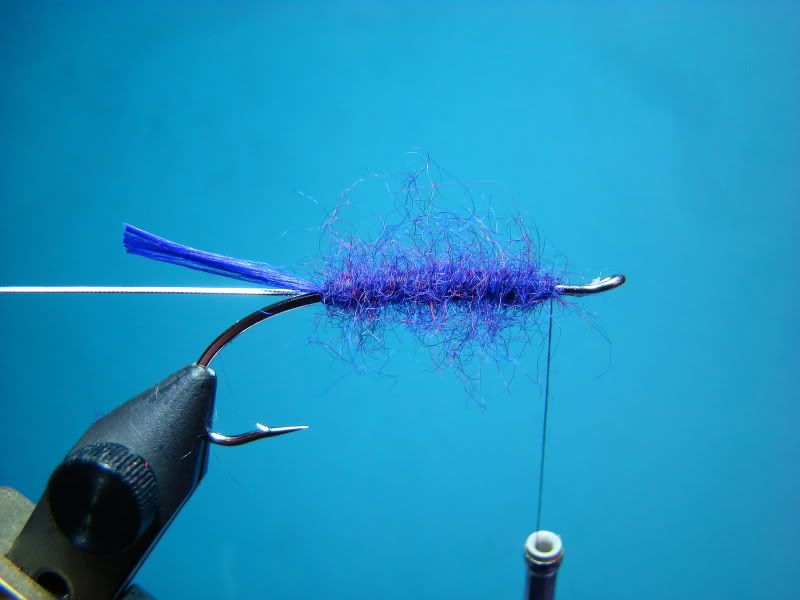
Step 4:
Rib body with five firm yet even and incremental turns of tinsel.

Pick out or roughen up the dubbing again.
Step 5:
Select a chinese rooster feather with a thin stem and tie in by the tip with two turns of thread. The length of hackle is a personal choice, but should look proportionate to the overall fly. Anywhere between three quarters of the body length to the hook point is sufficient. Double hackle fibers and take two to four turns.
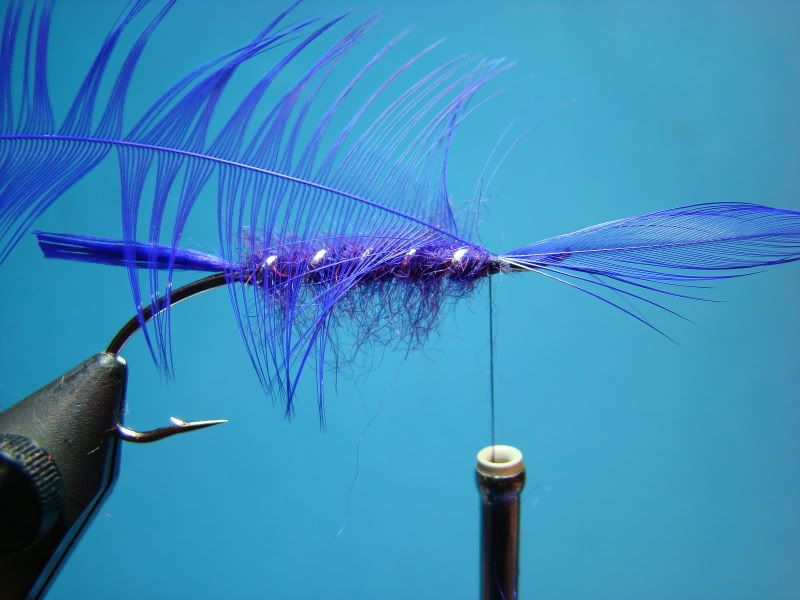
To aid in tying a small head, secure the hackle with two turns of thread forward then fold stem to the rear and lock it in place with two more turns. Trim tip.
Take 2 to 4 turns of hackle.

To secure feather utilize the same as the tie in- two wraps to pinch the feather against the hook shank, fold feather back, and take two more turns of thread. Note in the picture above how little bulk there is after cutting the feather.
Step 6:
Take 3 to 5 strands of Mirage Flashabou and slightly wet them. This will help manage the strands during this step. Secure strands under a wrap of thread by taking the strands under the shank and bringing them over the top (The floss technique on the Green Butt Purple Peril.). Once strands are in place take one firm turn of thread over of the strands behind the first wrap. While still holding the bobbin tightly bring the strands back over the body and take two turns forward. Next, whip finish with four turns wrapping to the rear. Trim thread. You will have a nice, neat, and small head.
Slightly pull wing over back and cut to length o the hook bend.
Step 7:
Apply two coats of thin penetrating head cement and one coat of "finisher." It is important to allow each coat of thin cement to dry before apply the final coat.

I bet you'll catch a fish with this pattern, but you have to tie a few and get them wet!
Hope to see you on the water. If not, you can always find me on Facebook- "The Benchside Fly Tyer."
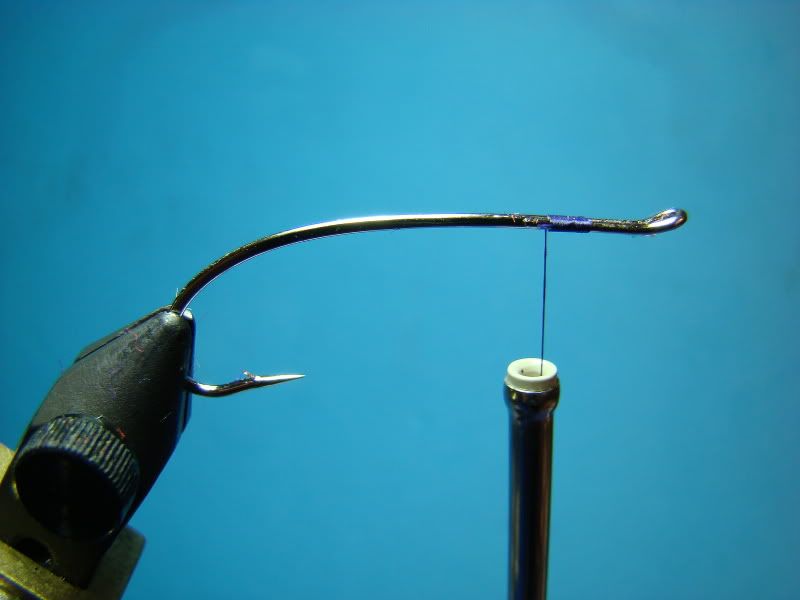
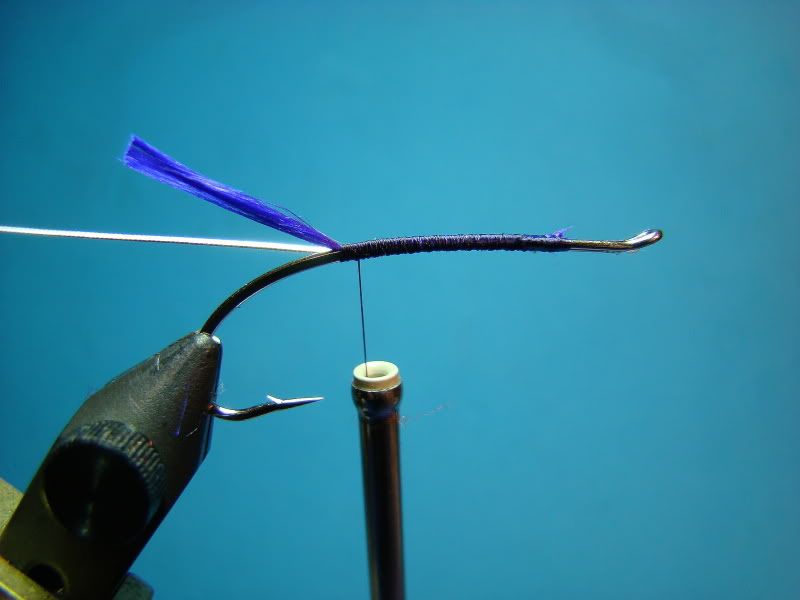
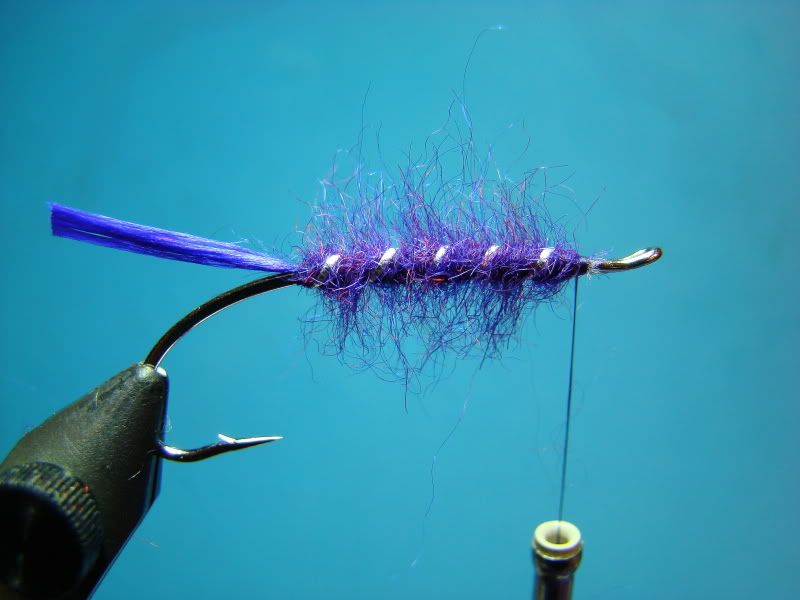

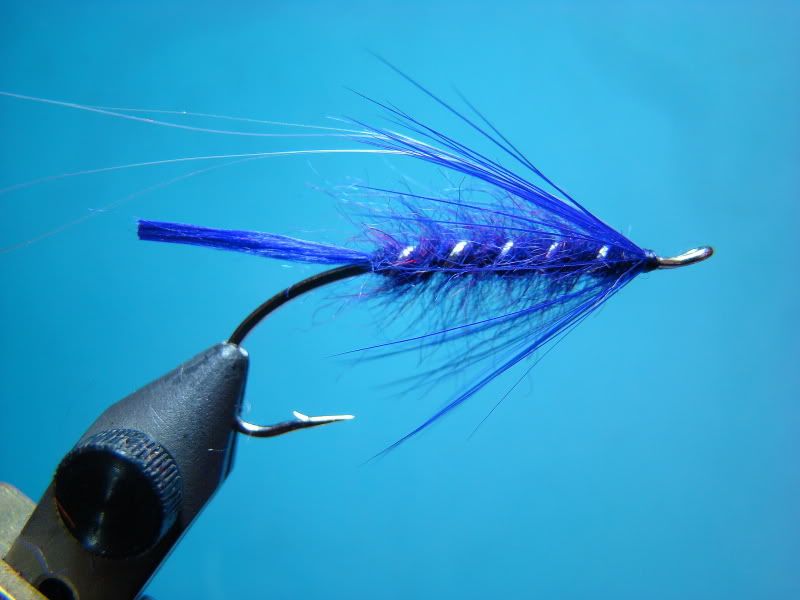
No comments:
Post a Comment